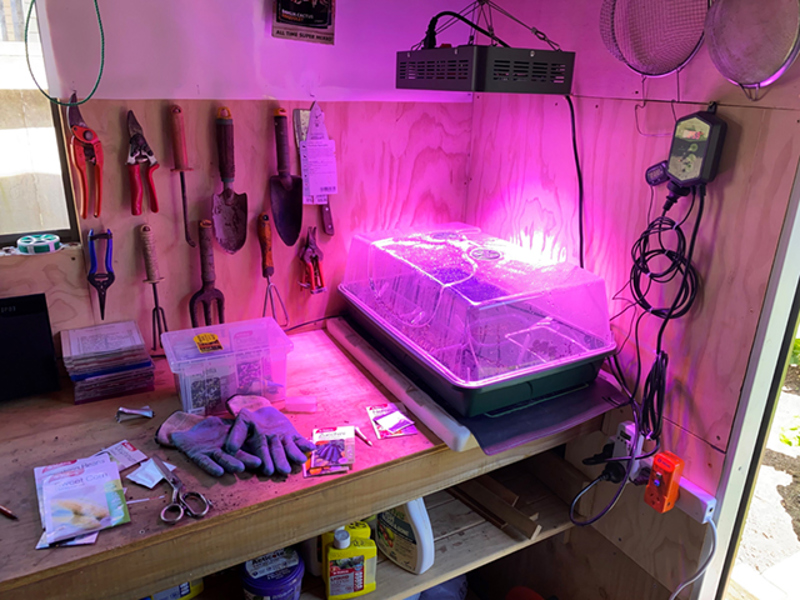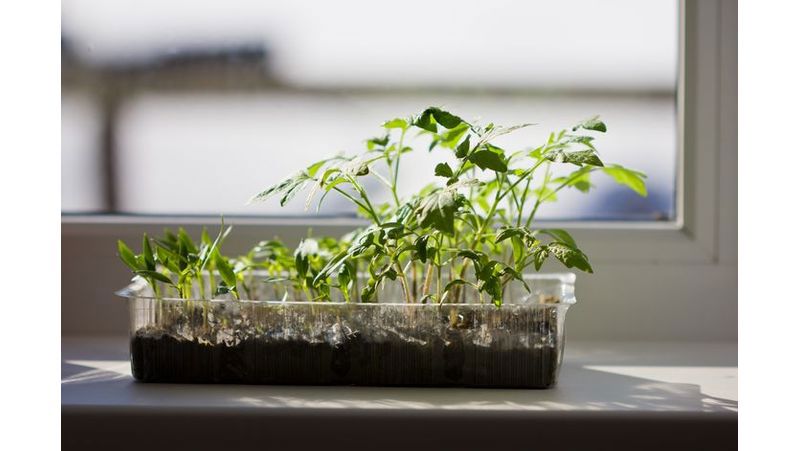Yates Account
Join now
Create a Yates account today!
Sign up to join the Yates Garden Club for monthly e-mails packed with seasonal inspiration, tips for success & exclusive promotions.
Plus if you’re a Garden Club member you can take part in the Yates Growing Community - a blog to share successes, get advice & win prizes in fun challenges along the way!

Forgot password
Enter the email address associated with your account, and we'll email you a new password.

A big challenge with growing heat-loving vegies is getting started early enough to give them a long enough growing season. In the cooler areas of the country, it can be a nail-biting race against winter when you’re waiting for your harvest, so it’s good to get ahead of the game!
The Fundamentals
Getting seeds started indoors is all about creating the conditions they need to germinate. There are 4 main variables you need to control for success – Warmth, Light, Moisture and Sowing Depth.
Warmth
The most important requirement of heat lovers like capsicums and chillies is that they need constant soil temperatures of at least 23°C to germinate. Proper heat lovers like eggplants won’t wake up unless they are kept at a minimum 25°C. The hotter the chilli, the higher the temperature needed to germinate them. You’ll definitely need to find a warm spot for your seedlings to germinate! A classic choice is the kitchen windowsill above the sink as it’s easy to keep an eye on the pots or trays. This means there’s far less chance of them drying out and they can be rotated regularly to receive even amounts of light. Tomatoes and capsicums are good candidates for windowsill germination, but be prepared to move them away from the window overnight as glass can radiate cold on frosty nights.
To get started really early in the season, or for serious heat-lovers like chillies and eggplants, we recommend a heat pad (available from garden retailers – they are quite durable and should last for years). Some heat pads come bundled with a simple thermometer with a wire sensor; these are very useful for checking the soil temperature. Sometimes you’ll need to slip a bit of polystyrene between the heat pad and your seed trays to stop the soil overheating, so a thermometer really helps you dial in the best setup.
Light
Light is really important for seedlings – they need adequate light levels to stop them getting spindly and ‘leggy’. If your warm spot doesn’t have much natural light, grow lights are a great way to compensate. Grow lights will give you excellent results, but they can be an expensive purchase. The good news is, you can make do with supplementary light from a desk or gooseneck lamp. Go for very bright ‘cool daylight’ LED bulbs, with a colour temperature of at least 6500k. Choose something powerful, preferably 10W or higher; when you’ve finished using it for seedlings you can swap the bulb to the kitchen light! The trick is getting the bulb physically close to the seedlings, which is why a moveable desk lamp is ideal.
Moisture
While seeds are germinating they need constant moisture. Eyeball your seed trays regularly to make sure they aren’t drying out, and give them a mist or light spray with water if they are.
We like to use a plastic ‘mini-greenhouse’ with a clear lid: they seal to maintain moisture levels and temperature and really help with germination. They are pretty inexpensive to purchase at garden retailers and like heat mats, should last for years of repeat sowing.
Sowing Depth
Sowing depth depends on the size of the seed - fine seed should be barely covered, while medium-sized seed is usually planted to a depth of about 6mm. Large seeds are planted deeper. Peas and beans, for example, can be planted 25mm deep. Always follow the sow depth advice on the seed packet.
Some tiny seeds need to be exposed to light for germination to occur, for example lettuce. These seeds are usually just pressed into the surface of the seed mix and covered with a sheet of glass or cling film. However, some seeds need to be totally protected from light. A good trick is to cover them with cardboard or newspaper and remove it after they germinate. The seed packet instructions will give you the correct growing tips for the variety you are sowing.

This enviable germination setup gives precise control over warmth, light and moisture. This equipment isn't a 'must-have' to be successful though! All you really need is a sunny windowsill or a hot-water cupboard.
Planting Out
You need to plan ahead, to when you'll plant out your seedlings - the traditional rule of thumb is to plant them out at Labour Weekend, after the seedlings have been 'hardened off' by spending gradually increasing periods outside. A cold frame is very useful to help with the hardening off process (they're available to buy, but making your own cold frame is a great DIY project - it's a time honoured way to reuse old windows and loose bricks).
The seed packets have the 'time to maturity' specified in weeks, so the trick is to count the weeks backwards from Labour Weekend, to give you an idea of when to start hardening off. If you take them outside too soon, they often sulk and stop growing, so maturity can be delayed.

Our Heat Loving Favourites
Tomatoes
Fill small, windowsill-sized pots or trays with Yates Black Magic Seed Raising Mix. Water and allow to drain. Sow tomato seeds, cover lightly and water again. After the seedlings emerge, thin crowded plants so that there’s at least a couple of centimetres between them. Begin feeding every week with half-strength Yates Thrive Natural Fish & Seaweed+ Plant Food Concentrate.
If you’re in a late-frost area you may need to move the young tomatoes into individual pots and continue to grow them under cover until the frosts are over.
One great advantage with tomatoes is that, even if the seedlings get a bit leggy, when it comes time to move them into their permanent garden home the seedlings can be planted quite deeply. New roots will form underground from the nodes, the tiny bumps on the lower part of the stem.
While the seedlings are growing and you’re waiting for the soil to warm up, take the opportunity to prepare the planting bed. Dig in some Yates Dynamic Lifter Organic Plant Food. In acid-soil areas (where azaleas flourish) add a small amount of Yates Thrive Natural Garden Lime.
Capsicums and Chillies
These plants are closely related to tomatoes, so grow in similar conditions. Yates seed range includes three popular capsicum varieties. The traditional Capsicum Giant Bell produces large fruit that can be used when green or allowed to mature to a rich red. Capsicum Colour Salad Selection can eventually ripen to produce red, yellow, orange or purple fruit. Capsicum Corno di Toro is a popular heirloom variety, producing long, curved green fruit (up to 25cm) which eventually mature to bright red. These are all classed as ‘sweet peppers’ because they don’t have any of the fierce heat of chillies.
Chillies grow into much smaller plants, so they make ideal potted plants. They also seem to be able to stand up to more cold (although they really don’t like frost) and in favourable conditions, can survive for a year or more. Early sowings should be kept indoors or under glass until the weather warms. But sowing in a protected spot in August gives you a valuable early start. For mild-medium heat chilli lovers, try Chilli Pepper Jalapeño Organic, Chilli Long Red Cayenne or Chilli Jwala, but for those who like it apocalyptically hot, try Chilli Habanero or Chilli Birds Eye.
Eggplants
Eggplants, which require a long growing season, need a very warm spot for a windowsill start. As they don’t like their roots being disturbed, seedlings must be transplanted with great care. Try Eggplant Baby Brinjal or Eggplant Blacknite.

















Share
Share this article on social media